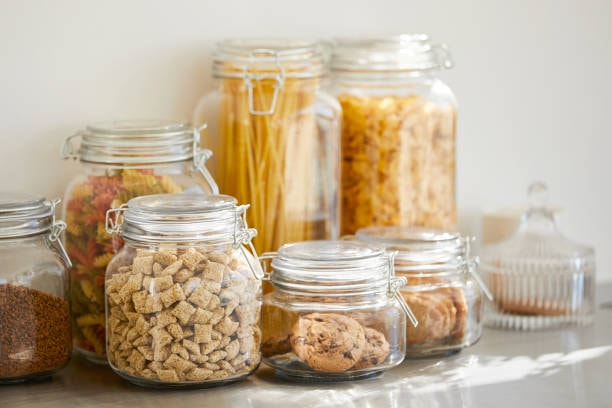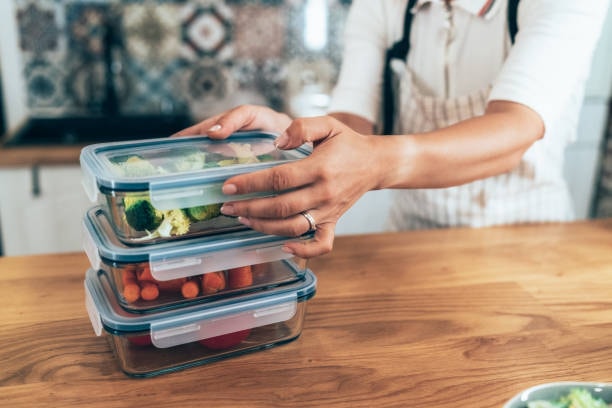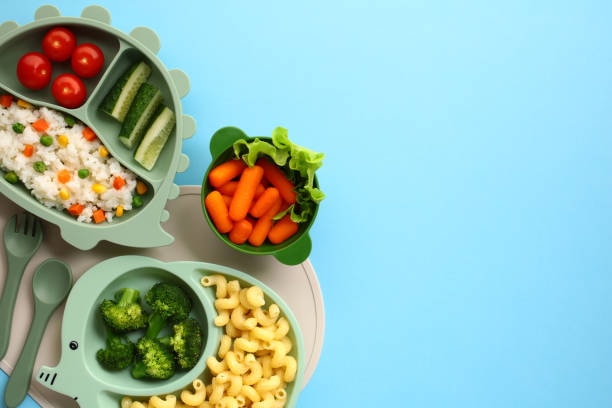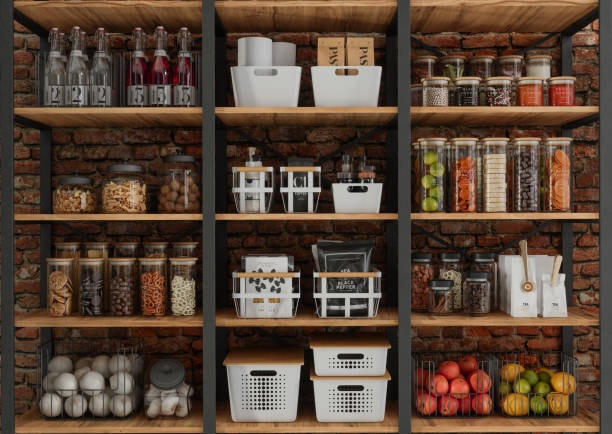In modern society where people pay much attention to their health and the environment, the selection of plastic food storage containers and utensils is crucial. Since there are many materials to choose from, two of the most common and discussed materials are silicone and glass. Like any other goods and services they have their own advantages and disadvantages and therefore the choice that is suitable for your kitchen depends on the choice you make. This blog covers all the relevant nutrients of silicone and glass food storage containers so that you are aware of all you need to know.
Introduction

Kitchen food storage containers are very important in every kitchen, and they help with storing foods, preventing wastage and neat arrangement of the foods to be stored in the pantry or refrigerator. For this reason, silicone and glass or plastic containers, from all the materials that are available in the market, are most suitable because of their special characteristics. However, what is the best suited for your requirements; basic or advanced? This blog will be aimed at comparing silicone and glass food storage containers in terms of factors such as durability, safety, versatility, environmental friendly, and cost.
Durability: Longevity and Toughness
Silicone Containers: Flexible Yet Resilient

Silicone containers are favorably distinguished by flexibility and non-susceptibility prone to cracking or breaking. They are less likely to break if dropped making them ideal for households with toddlers or for on the go use. Silicone is also withstand high and low temperatures; thus, an item made from silicone utensils can be just taken out from the freezer and moved to the microwave. Nevertheless, silicone may gradually retain the smell of food, however sharp or weak it is, or possible stains, if the utensils are exposed to highly pigmented or strong smelling food.
Glass Containers: Sturdy but Fragile

Glass containers will always be cherished due to their durability and the fact that they will always be serviceable. They do not deform or crack so easily and usually do not stain or are not likely to be scratched. In addition, glass has smooth surface that is chemically inert which prevents odors and flavors from the food from getting into the glass. But glass is comparatively weak and can crack or chip, if it is dropped or if the temperature contrasts are very sharp soapy water. Most glass containers are manufactured in a way to ensure that they can be used in an oven however, they need to be handled carefully as they are breakable.
Safety: Health Implications and Food Safety
Silicone Containers: Non-Toxic but Controversial

Silicone containers are favorably distinguished by flexibility and non-susceptibility to cracking or breaking. They are less likely to break if dropped making them ideal for households with toddlers or for on the go use. Silicone is also withstand high and low temperatures; thus, an item made from silicone utensils can be just taken out from the freezer and moved to the microwave. Nevertheless, silicone may gradually retain the smell of food, however sharp or weak it is, or possible stains, if the utensils are exposed to highly pigmented or strong smelling food.
Glass Containers: Pure and Chemical-Free

Glass containers will always be cherished due to their durability and the fact that they will always be serviceable. They do not deform or crack so easily and usually do not stain or are not likely to be scratched. In addition, glass has smooth surface that is chemically inert which prevents odors and flavors from the food from getting into the glass. But glass is comparatively weak and can crack or chip, if it is dropped or if the temperature contrasts are very sharp. Most glass containers are manufactured in a way that they can be used in an oven however, they need to be handled carefully as they are breakable.
Versatility: Uses and Applications
Silicone Containers: Adaptable and Space-Saving

Silicone containers are very convenient. They can however, be utilized in microwave, oven, freezer and dishwasher; thus can be recommendable for cooking, heating and storing. They are bendable; they can either disappear or be flattened by folding thus occupying little space in your kitchen cabinets or the pantry. Silicone lids are also used to cover bowls or dishes of any required shape and size, if needed. Nonetheless, having silicone as the chief material it might be a con when it comes to food types that require a more firm packaging in order to be preserved.
Glass Containers: Reliable for Multiple Purposes

In addition, glass containers also have advantage in terms of flexibility. The product is oven safe, microwave safe, freezer safe, as well as labeled as being dish washer safe; ideal for baking, reheating or storing food. Tight fitting glass containers help in meal preparation, as they allow the stored food to remain fresh for longer duration. On the downside, glass containers are a tad heavier and larger than silicone, creating a not-so-portable experience for whatever meal or snack you are transporting and packing.
Environmental Impact: Sustainability and Eco-Friendliness

Silicone Containers: Reusable but Not Biodegradable
The material is silicone which is very hardwearing and can be used for many years, thereby cutting out disposable plastic pots. It is also immune to degradation by sunlight harmful chemicals, oxygen and other harm factions in the environment. But, silicone is not eco-friendly as it cannot decompose naturally, it may take approximately 200-300 years to decay in a landfill. Even though silicone is recyclable to some extent, most recycling centers do not take silicone items, which poses a problem.
Glass Containers: Sustainable and Recyclable
They are glass and this is one of the most ecofriendly mediums for food storage container preservation. It can be recycled, and the fact is that it can be recycled an infinite number of times without degradation of the quality and the purity. Glass containers are also very strong and can be reused for a very long time meaning that there has to be very little need to replace them as often. Yet, the energy intensiveness of glass manufacturing and recycling is greater than that of silicone, although this should be viewed in comparison to other factors for the full evaluation of environmental effects.
Cost: Initial Investment and Long-Term Value
Silicone Containers: Affordable and Accessible
In the commercial aspect silicone containers are cheaper than glass which in turn motivates those who are operating under a certain level of budget. His sturdiness and the build that does not degrade or easily break also makes him good for the long run, thus providing good value for the money. Nevertheless, the first cost might be influenced by the quality of the silicone to be used. This is why it is paramount to spend your money on its high quality, specifically food-grade silicone.
Glass Containers: Higher Cost, But Worth the Investment
It should also be noted that glass containers are often more costly than silicone when one buys them. Consequently, despite their cost, they are most often more durable, safe, and versatile than products made of other materials. Glass containers can indeed be used for a long time only if properly maintained and therefore could be a worthy investment by those who are in search of long lasting containers for storgae of foods and other similar items. Besides, such advantages as the absence of emissions from chemicals and heat and the possibility of recycling the product are beneficial for health- and environmentally-concerned buyers.
Practicality: Everyday Use and Maintenance
Silicone Containers: Easy to Store and Clean
Silicone containers are not bulky, are flexible, and in most cases are portable and foldable which is suitable for small kitchens or for transportation. They are also dishwasher safe, and should be relatively easy to wash; though some extra effort may have to be exerted in order to rid the piece of smell or dirt. This also make them suitable to fit small or narrow spaces in your refrigerator or pantry. Still, it is worth noting that the silicone containers may not offer the same hermetic seal as the glass – that can influence the food quality on the longer term.
Glass Containers: Convenient but Requires Care
Even if glass units their bulk strength to metal, this comes with the (desirable) attributes of oven-to-table-to-fridge convenience. They are generally easily washed with dishes and are dishwasher safe, nonstick and will not stain or hold odours. Still, unlike others, they are often fragile and rather heavy, which makes them somewhat inconvenient to use for moving food or placing it in densely stocked refrigerators. Glass containers also occupy more space mostly because of their complex structure, and it could be a disadvantage in a small kitchen.
Glass Containers: Convenient but Requires Care Aesthetics: Visual Appeal and Design
Silicone Containers: Modern and Colorful
They are a bit expensive but come in cute designs, the colors and shapes of these silicone containers are breathtaking. They are most commonly used as they create cheerful and playful look which is perfect for contemporary or playful kitchens cold resistant. Silicone is also flexible which means that the flasks can have virtually any shape as well as additional functions, such as a collapsible container or a lid that is the same size as the flask.
Glass Containers: Classic and Transparent
Beverages are best served in glass containers because glass gives a touch of traditional appeal that complements the kitchen setting. This feature is functional, as one gets to see what is inside the box at first instance thus the beauty of the package. It is appreciated that glass containers are easy to clean and give a neat look to the kitchen; their simplicity is preferred by many. Although they do not provide the apparent option of colors or designs like the silicone ones, their transparent and simple look has its advantage for most people store food.
Conclusion
When we compare two types of successful silicon food storage containers and glass ones, it’s rather difficult to provide an all-sided answer. It should be remembered that the choice will depend on personal requirements, daily routine, and principles. If one needs strength, safety and longer life glass would be favorable to utilize as compared to plastic. On the other hand, if something light, multipurpose and compact is required, then the silicone food storage containers is probably the best material to use leach harmful chemicals. In conclusion, both material types are perfect for the storage of the food item of your choice as this helps in arranging the kitchen in the best and environmentally friendly manner possible.